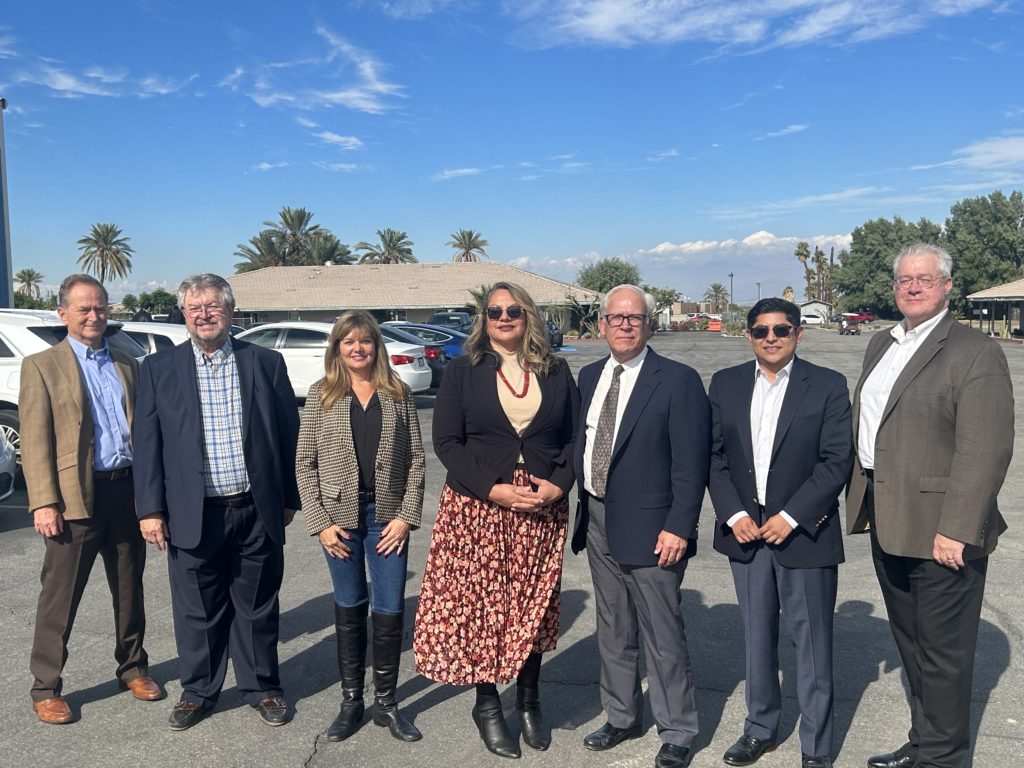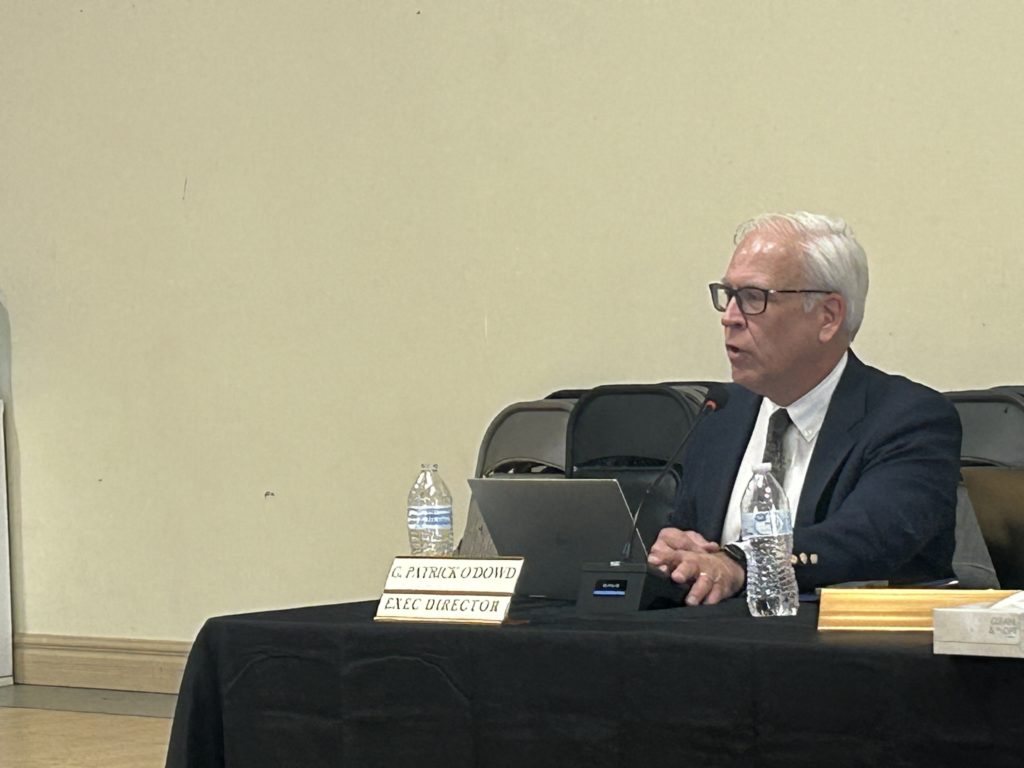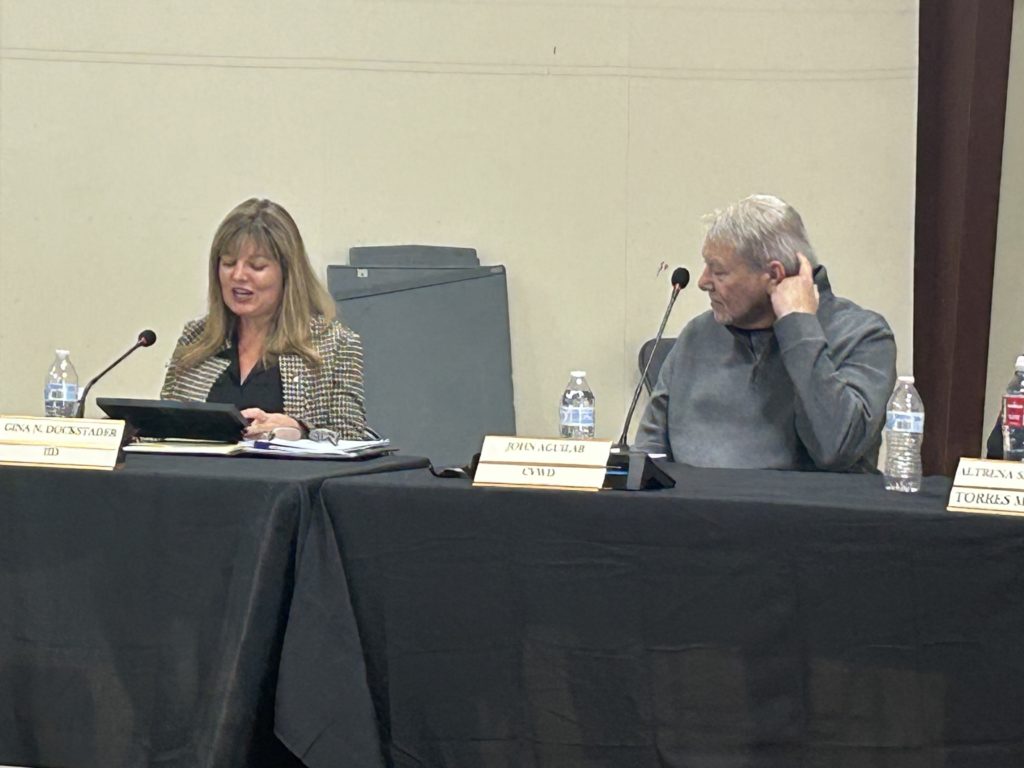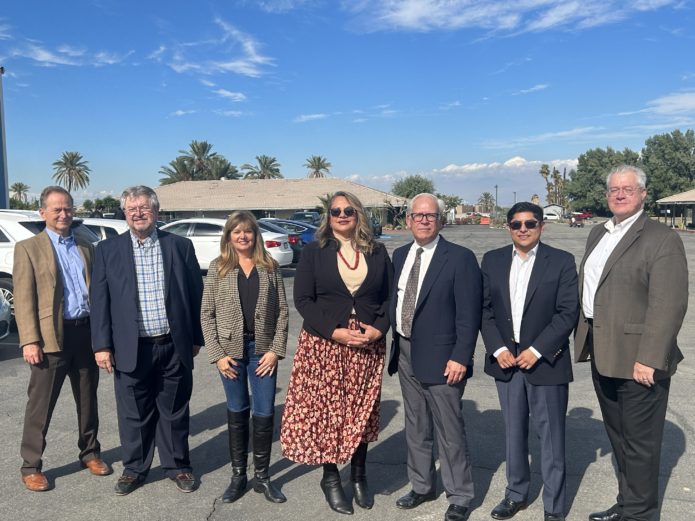
On November 16, the Salton Sea Authority (SSA) and community leaders came together on Torres Martinez Desert Cahuilla tribal land in Mecca, California, to mark the SSA’s 30th anniversary in an event that saw past and present executive directors and current board members share their experiences advocating for the sea. The SSA was formed in 1993 as a state joint powers authority to oversee the management of the state’s largest inland lake. Because the Salton Sea stretches across both Imperial and Riverside counties, the original version of the SSA consisted of both regions’ water agencies, the Imperial Irrigation District (IID) and the Coachella Valley Water District (CVWD), and both regions’ land use leaders, the Imperial County and Riverside County Board of Supervisors. Two representatives from each agency sat on the SSA board. Later, recognizing that the Torres Martinez Desert Cahuilla tribe was a major landowner on the sea with historical rights, the tribe was added to the SSA. While the work of the SSA has changed over time, those who spoke during the event credited the board and management staff for their passion to not only protect the sea but also the surrounding communities.

Current SSA Executive Director G. Patrick O’Dowd, who took on the role after serving years on the SSA board representing CVWD, praised his board. “The Salton Sea Authority is nothing without its member agencies.” He said his goal for the SSA is to promote health, habitat, and opportunity at the Salton Sea with the clear priority being the health of those who live near the sea. At the same time, he pointed out it is critical to pursue opportunities for development at the sea, which in turn can help achieve the goal of ensuring the health of the surrounding communities. “You can’t achieve the health objective without the opportunities,” he said. O’Dowd helms the SSA at a time when efforts are starting to coalesce into the successful development of projects, and hundreds of millions of dollars have been set aside for the sea’s restoration. At the same time, the sea is facing new challenges brought on by the impacts of drought and climate change on the Colorado River, which ultimately is the sea’s source of water.
For Tom Kirk, the SSA’s first executive director, who led from 1993 to 2006, the goals were very different when he first joined. Through a pre-recorded video, Kirk said in 1993, one of the biggest concerns was that the sea was overflowing and causing flood damage, which led to efforts to dike off portions to protect communities and farms. “It was a very different story 30 years ago,” he said. Then, later in the ’90s, came the massive bird die-offs as a bird disease called avian botulism wiped out large numbers of migratory fowl. Efforts back then included opening a field hospital at the Sony Bono National Wildlife Refuge to save as many birds as possible. Then, during his tenure, the 2003 Quantification Settlement Agreement was approved, and the efforts shifted “to addressing the politics and potential impacts to the sea.”
Another former executive director, Rick Daniels, who attended the event, spoke about the pride he felt during his tenure (2006 to 2007) for the SSA board’s efforts to develop a restoration vision. It was during Daniels’ time as executive director that the state released its preferred alternative restoration plan. The state’s alternative, released in 2007, would have focused on a marine lake along the sea’s northern shore, a channel of water around the sea to protect the shoreline and habitat structures along the sea’s southern end. That alternative came with a $9 billion estimated cost. The SSA had come up with its own lower cost alternative ($2.2 billion) based on the board’s vision for restoration. That proposal involved dividing the sea into a two-lake system, one to the north and one to the south with a channel protecting the shorelines. Habitat would also be created. That plan was not accepted by the state and instead only elements of the SSA proposal were incorporated into the state alternative. The funding for the state’s preferred alternative was never approved and what followed was a period where there was little movement toward restoration.
Bob Hargraves, the SSA’s longtime attorney, noted an important turning point came in 2013 when then Assemblyman V. Manuel Perez, who now sits on the SSA board as a Riverside County supervisor, introduced Assembly Bill 71. That legislation, which was signed by Gov. Edmund G. Brown, established that the California Natural Resources Agency and the SSA would work in coordination on the sea’s restoration and commissioned the SSA to lead a funding and feasibility study meant to help restart restoration efforts. That legislation helped solidify the SSA’s leadership role as a unified voice for local agencies.
Phil Rosentrater, who led the SSA as executive director from 2015 to 2020, credited the efforts of the SSA in the years that followed. He said from that feasibility study came a plan to address dust from exposed playa, create habitat, and develop recreational uses at the sea. “You all have tried to do right by the sea, and I think you have succeeded,” he said, adding, “Any progress has to be considered major progress.”
Looking ahead, the SSA is engaged with a series of critical projects. One of which is the Desert Shores Channel Restoration Project, which would revitalize channels and habitat within the community of Desert Shores by returning water to the channels. The SSA is also partnering with the U.S. Army Corps of Engineers and the state Department of Water Resources on the Imperial Streams and Salton Sea Ecosystem Restoration Feasibility Study Project Plan, which could make “major federal dollars” available for the sea, according to O’Dowd. Additionally, the SSA is also a partner in The Salton Sea North Lake Pilot Demonstration Project, a pilot project to construct 156 acres of shallow and deep-water habitat for fish and birds on the northern shore, that will also provide recreational opportunities.

Those who spoke during the event said they look forward to the SSA’s role over the next 30 years. IID Board President Alex Cardenas, who represents IID on the SSA board, said, “This is an incredible milestone,” adding that in marking this anniversary, it is also a celebration of the ongoing engagement of the communities around the sea. Altrena Santillanes, the SSA’s current chair, and a representative from the Torres Martinez tribe, thanked those who have served the SSA over the years as well as the current board and staff. She added serving on the board “has added to my experience and my wisdom and knowledge of my tribe and the ongoing issues with the sea.” Castulo Estrada, who represents CVWD on the SSA board, said, “It’s been an honor to serve the last 10 years, and I’m looking forward to continuing to work with all of you going forward.”
Along with Cardenas, Estrada and Santillanes, the current SSA board includes, Ryan Kelley and Luis Plancarte, representing the Imperial County Board of Supervisors, Gina Dockstader, representing IID along with Cardenas, V. Manuel Perez and Yxstian Gutierrez, both representing the Riverside County Supervisors, and Thomas Tortez, tribal council chairman representing the Torres Martinez tribe along with Santillanes.
